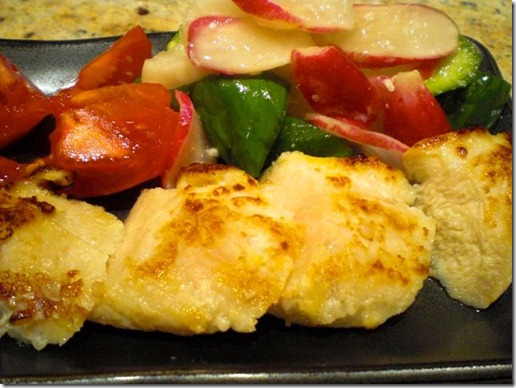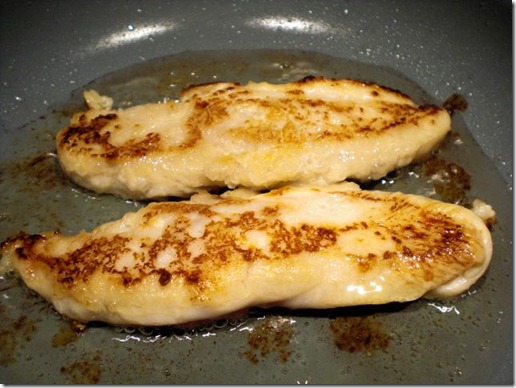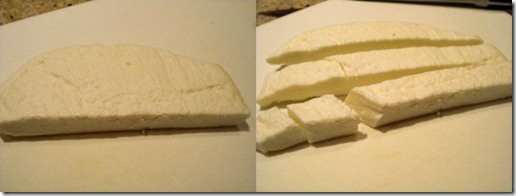
Chicken thighs: I used 1 pack of chicken thighs (4 in a pack). I removed the bone and excess fat. I butterflied the thick part to make the thickness even and then shallowly cross hatched to increase the contact surface for the marinade. I trimmed the skin but left it on.
Marinades: For the two thighs I marinated teriyaki-style (1 part soy sauce and 1 part mirin with grated ginger root), for the other two I coated the surface with shio-koji. Both were placed in Ziploc bags and marinated over night in the refrigerator.
The next day, I removed the thighs and blotted off any excess surface moisture (#1 below, lighter ones in the front were shio-koji marinated). I cooked both in an identical way for comparison with small amount of light olive oil in non-stick frying pans on medium-low flames (#2, shio-koji and #3 teriyaki). After a few minutes, I turned them over. The shio-koji ones are much darker (#2) than the teriyaki ones (#3). I kept cooking with the skin side down with identical sized frying pans on the top to press the skin surface down to the bottom of the pans (I was hoping to make the skin crispy all around). I was expecting the shio-koji ones might burn (because they cooked so dark on the first side) but was surprised. The shi-koji marinated ones came out with blackened skin (#4 left) but for the teriyaki ones, the skin was totally burned and melded to the bottom of the pan. I had to remove the thighs abandoning the charred skin leaving it behind in the pan. (My wife would refer to this calamity as “sacrificing the skin to the “pan god”) (#4 right). I have to fine tune the way I cook these thighs.

I served both thighs cut into four equal pieces side-by-side for comparison with our home made potato salad. Our verdict is that the shio-koji ones were very tender and good, although the flavor is not as distinct as the teriyaki ones. For the shio-koji ones, the skin was blackened but crispy and quite edible. So, shio-koji marination worked best for chicken thighs among the kinds of meat we tried (chicken tender and Flat iron steak).







 Digression alert!: The category of “bread” called “quick” bread, in which biscuit certainly belongs, usually use chemical leavening agents (instead of organic and living agents such as yeast). These are
Digression alert!: The category of “bread” called “quick” bread, in which biscuit certainly belongs, usually use chemical leavening agents (instead of organic and living agents such as yeast). These are 
 Since the dough is “dropped” into a hot iron skillet (see above left), the bottom of the biscuit became brown and extra crispy (see above right)—this is without a doubt the best part! The goat cheese flavor with chives in this crunchy fluffy and hot biscuit is good eatin’ any time.
Since the dough is “dropped” into a hot iron skillet (see above left), the bottom of the biscuit became brown and extra crispy (see above right)—this is without a doubt the best part! The goat cheese flavor with chives in this crunchy fluffy and hot biscuit is good eatin’ any time.





